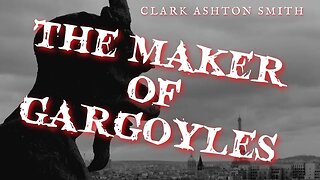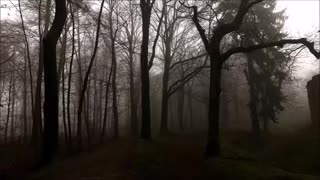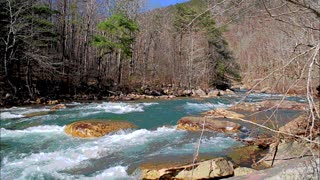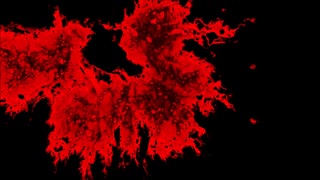"The Maker of Gargoyles" by Clark Ashton Smith
0:00:00 Chapter 1
0:06:50 Chapter 2
0:17:07 Chapter 3
0:29:07 Chapter 4
----
lineament: a distinctive feature or characteristic, especially of the face
ferine: feral
askance: with an attitude or look of suspicion or disapproval
loups-garous: werewolves
stryge: evil birds that feed on human flesh and blood. In D&D, you know these as stirges.
Abaddon: a place of destruction; an underworld abode of lost souls; hell
aspergillum: a brush or small perforated container with a handle that is used for sprinkling holy water in a liturgical service
probity: the quality of having strong moral principles; honesty and decency
flambeau: flaming torch
Amaimon: I couldn't find a consistent pronunciation on this name, so no idea what it is supposed to be. It's the 'mai', should it be 'my' or 'may'? Nobody seems to know. Oh well.
catafalque: a decorated wooden framework supporting the coffin of a distinguished person during a funeral or while lying in state
rapine: the violent seizure of someone's property
mow: in this context, grimace
mercer: a dealer in expensive fabrics
lubricious: offensively displaying or intended to arouse sexual desire
verger: an official in a church who acts as a caretaker and attendant
I love that Smith uses so many words related to evil: malignance, maelevolence, virulence, baleful, rancor, execrable. We don't use these words nearly enough any more. I guess everybody these days wants to attribute evil to a difficult upbringing, or social oppression, or alienation, or what not, and because these causes do not specifically seek to create evil outcomes, and because calling these causes as evil would require us to ask of ourselves some very uncomfortable and difficult questions, we no longer call the outcomes of these causes as evil, so the rich variety of words to describe evil has fallen away. But in medieval times, when you didn't have such psycho-social explanations, and heaven and hell were very real to you, good and evil were legit forces that could be used to explain things without any bother.
The pictures used are:
chapter 1: a gargoyle that strikes me as possibly akin to the murderous gargoyle of the story. Although I believe this one is actually to be found in London, so not French.
chapter 2: a view of Carcassonne. It's a medieval French walled city in southern France. A fair bit further south than Averoigne should be, but I definitely didn't want to use a northern French city, so this is what we get.
chapter 3: an illustration for the story from Weird Tales, Aug. 1932
chapter 4: Façade of the Clermont-Ferrand Cathedral (Cathédrale Notre-Dame-de-l'Assomption de Clermont-Ferrand) in the town of Clermont-Ferrand in Auvergne, by Gnu thomas, used here under the Creative Commons Attribution-ShareAlike 3.0 Unported license (https://creativecommons.org/licenses/by-sa/3.0/deed.en).
I didn't want to go with the most famous of French cathedrals, like the Notre-Dame de Paris or Reims, they are so easily recognized and as such might take you out of the story. And I have no idea if French Cathedrals have any substantive stylistic architectural variation between northern and southern France, but just in case I looked for southern cathedrals both for being lesser known and, if relevant, more correct in style. Finding a real gothic looking one in Auvergne made for a no-brainer. You can't easily tell from a black-and-white photo, but this particular cathedral is made of black lava stone to boot! Look up some color pictures of it, it is incredible.
To follow along: http://www.eldritchdark.com/writings/short-stories/121/the-maker-of-gargoyles
-
 48:16
48:16
Classic Ghost Stories on Rumble
2 years ago $0.01 earnedThe Maker of Gargoyles by Clark Ashton Smith
65 -
 53:39
53:39
sststr
11 months ago"The Holiness of Azédarac" by Clark Ashton Smith
58 -
 37:31
37:31
DwelleroftheDark
3 years ago $0.03 earned"The Hound" By H. P. Lovecraft (Narrated By Jeffrey LeBlanc)
7.5K -
 12:30
12:30
Square Pegs - Conversations and questionings
11 months ago"LIFE AS CAROLA" A JOAN GRANTS FAR MEMORY BOOK, CHAP 14 /1- THE FUGITIVE & 2 RELUCTANT TROBADOUR
23 -
 29:49
29:49
DwelleroftheDark
3 years ago $0.01 earned"The Outsider" By H. P. Lovecraft (Narrated By Jeffrey LeBlanc)
1.32K -
 29:05
29:05
DwelleroftheDark
3 years ago"Chickamauga" (Narrated By Jeffrey LeBlanc)
206 -
 46:18
46:18
DwelleroftheDark
3 years ago"The Cloak" (Narrated By Jeffrey LeBlanc)
207 -
 17:04
17:04
Square Pegs - Conversations and questionings
11 months ago"LIFE AS CAROLA" A JOAN GRANTS FAR MEMORY, CHAP 24 PART 2-STATUE OF APOLLO, part 3 CAROLA SAW LOVE
4 -
 1:04:50
1:04:50
DwelleroftheDark
3 years ago"The Christmas Banquet" (Narrated By Jeffrey LeBlanc)
142 -
 13:02
13:02
The Cross Roads
1 year agoCourage out of shadows and ashes in the time of Covid Or Eliot, Durrell, Tennyson By Graham Lyons
523